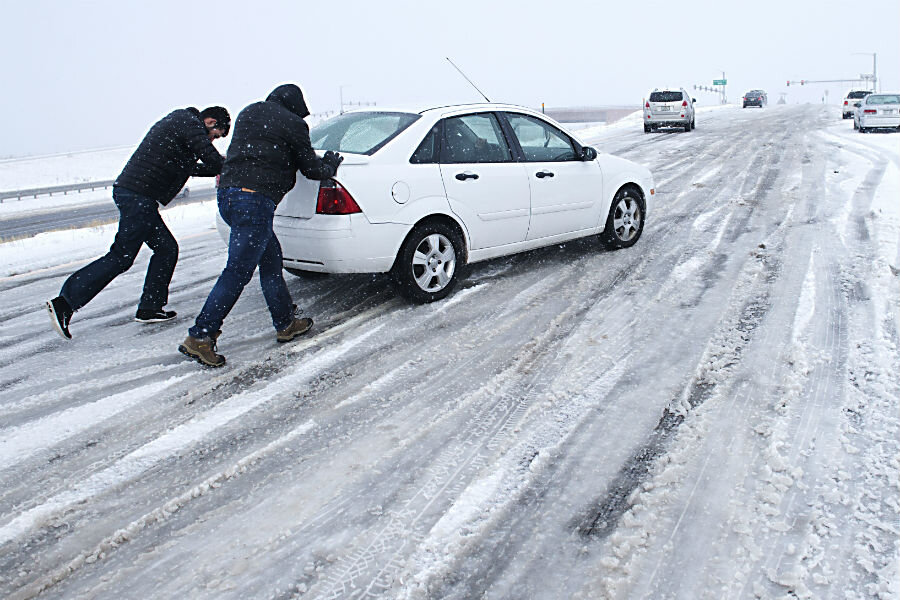What's the 'Witch of November' doing in the Midwest?
Loading...
Dubbed the "Witch of November" by some meteorologists, a powerful low-pressure weather system moved across the upper Midwest Wednesday, causing more than 10 tornadoes and numerous floods for residents across Iowa, Nebraska and Missouri and blizzard conditions across the Rockies.
From Colorado to Ohio and Texas to Michigan, the system has affected more than 36.5 million people.
“Usually you kind of get a one-two punch with this type of event,” Stephen Corfidi, a meteorologist at the Storm Prediction Center in Norman, Okla., told the Associated Press. “Basically there’s a warm side and a cold side to these systems, and the unifying threat is a very strong wind field all the way around it.”
Mr. Corfidi explains that the cold side has snow and blizzard conditions, and the warm side has thunderstorms that grow and build with strong winds, causing the storms to rotate. “And if they rotate long enough, and if the moisture is great enough, they can produce tornadoes,” Corfidi adds.
“Probably the worst has passed,” he says. If conditions had been a little warmer, threats from the "November Witch" would be more severe.
But many of these states have still felt a serious impact from the storm. The Denver area got more than five inches of snow, causing spinouts on an icy Interstate 25 near the Wyoming border. Wyoming authorities have also shut down a number of roadways.
Eastern Iowa, western Illinois, and northeast Missouri witnessed winds between 25 and 35 miles per hour Thursday morning, with some gusts reaching up to 60 miles per hour.
“We’ve got plenty of wind energy from the jet stream to work with,” Danielle Banks, a meteorologist for The Weather Channel told NBC. “That is going to drive the snow around, leading to poor visibility.”
In Chicago, a severe wind advisory was issued Thursday. Chicago police shut down parts of the Skyway after debris from high winds struck two semitrailers in the early morning hours.
Flipped semitrailers are dotted across Interstate 80 in Iowa, along with other reports of power outages and damaged buildings in the state.
Nick Lose returned home from work in West Des Moines, Iowa, Wednesday to tornado sirens – an uncommon sound in the month of November.
“It doesn’t happen in the fall very often like this,” Mr. Lose told NBC News. “This isn’t tornado season. It just came out of nowhere. It’s out of season.”
The 'Witch of November' is a reference to the Nov. 10, 1975 storm that sank the freighter Edmund Fitzgerald on Lake Superior. One of the fiercest storms ever recorded on the Great Lakes, a Gordon Lightfoot song "The Wreck of the Edmund Fitzgerald" includes the rubric for the storm that killed all 29 men on board.
"When the witch angrily stirs her cauldron, no ship, no matter how large, is safe on the Great Lakes," said meteorologist Steve Horstmeyer and geographer Mace Bentley in a 1998 article in Weatherwise magazine.
The last report of a November tornado in Iowa came in 2005, and before that in 1991.








